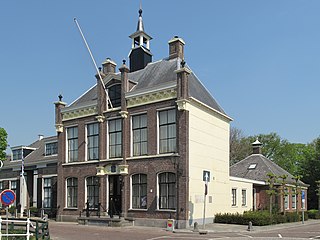
Year 734 (DCCXXXIV) was a common year starting on Friday of the Julian calendar. The denomination 734 for this year has been used since the early medieval period, when the Anno Domini calendar era became the prevalent method in Europe for naming years.

Frisia is a coastal region along the southeastern corner of the North Sea in what today is mostly a large part of the Netherlands, including modern Friesland and smaller parts of northern Germany. Frisia is the traditional homeland of the Frisians, a Germanic people that speaks Frisian languages, which together with English and Scots form the Anglo-Frisian language group.

Conrad, a member of the Hohenstaufen dynasty, was the only son of Emperor Frederick II from his second marriage with Queen Isabella II of Jerusalem. He inherited the title of a King of Jerusalem upon the death of his mother in childbed. Appointed Duke of Swabia in 1235, his father had him elected King of Germany and crowned King of Italy in 1237. After the emperor was deposed and died in 1250, he ruled as King of Sicily until his death.

Eric IV, also known as Eric Ploughpenny or Eric Plowpenny, was king of Denmark from 1241 until his death in 1250. He was the son of Valdemar II of Denmark by his wife, Berengaria of Portugal, and brother of King Abel of Denmark and King Christopher I of Denmark
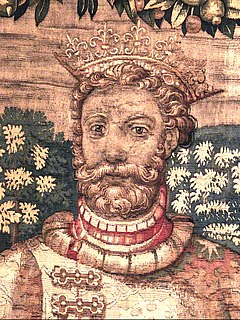
Abel of Denmark was Duke of Schleswig from 1232 to 1252 and King of Denmark from 1250 until his death in 1252. He was the son of Valdemar II by his second wife, Berengária of Portugal, and brother to Eric IV and Christopher I.
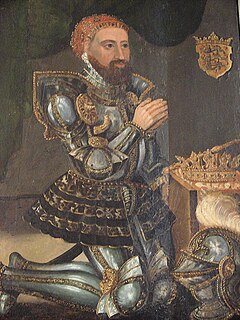
Christopher I was King of Denmark between 1252 and 1259. He was the son of Valdemar II of Denmark by his wife, Infanta Berengária of Portugal. He succeeded his brothers Eric IV Plovpenning and Abel of Denmark on the throne. Christopher was elected King upon the death of his older brother Abel in the summer of 1252. He was crowned at Lund Cathedral on Christmas Day 1252.

The County of Holland was a State of the Holy Roman Empire and from 1432 part of the Burgundian Netherlands, from 1482 part of the Habsburg Netherlands and from 1648 onward the leading province of the Dutch Republic, of which it remained a part until the Batavian Revolution in 1795. The territory of the County of Holland corresponds roughly with the current provinces of North Holland and South Holland in the Netherlands.

Podestà is the name given to certain high officials in many Italian cities beginning in the later Middle Ages. Mainly it meant the chief magistrate of a city state, the counterpart to similar positions in other cities that went by other names, e.g. rettori ("rectors"), but it could also mean the local administrator, who was the representative of the Holy Roman Emperor. Currently, Podestà is the title of mayors in Italian-speaking municipalities of Graubünden in Switzerland.
Gerolf or Gerulf was the second count of this name who is attested in the area of Friesland. Gerolf's main area of power seems to have been in Kennemerland. Count Gerolf is often regarded as the founder of the County of Holland, although the actual name "Holland" is from a later time. His ancestry is unclear, but he may have been a son or, more likely, a grandson of the earlier Gerolf, who was a count in the area of Frisia at the time of the reign of Emperor Louis the Pious and who later joined a monastery. The earlier Gerolf died in 855. There is some limited and vague evidence that this earlier Gerolf was a son of a certain Theodoric, who in turn supposedly descended from the Frisian king Redbad. Count Gerolf is often identified as the father of Count Dirk I and seen as the founder of the first house of the Counts of Holland, which ruled the county until it was inherited by John II of Hainaut in 1299.

Magnus Forteman (809), was the legendary first potestaat and commander of Friesland which is now a province of Netherlands. His existence is based on a sage's writings.
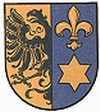
Igo Galama was the legendary fifth potestaat of Friesland, now a province of the Netherlands. There is no evidence that he existed.
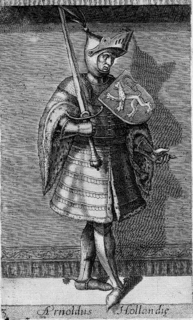
Arnulf, also known as Aernout or Arnold succeeded his father in 988 as Count in Frisia. He was born in 951 in Ghent and because of this he is also known as Arnulf of Ghent. Arnulf was the son of Dirk II, Count of Holland and Hildegard, thought to be a daughter of Arnulf of Flanders.
Hessel Hermana is the fourth potestaat of Friesland in the list of rulers of Frisia. Supposedly from Sexbierum, he does not appear in historical sources until the late 16th century.

The Frisian Kingdom, also known as Magna Frisia, is a modern name for the Frisian realm in the period when it was at its largest (650-734). This empire was ruled by kings and emerged in the mid-7th century and probably ended with the Battle of the Boarn in 734 when the Frisians were defeated by the Frankish Empire. It lay mainly in what is now the Netherlands and – according to some 19th century authors – extended from the Zwin near Bruges in Belgium to the Weser in Germany. The center of power was the city of Utrecht. In medieval writings, the region is designated by the Latin term Frisia. There is a dispute among historians about the extent of this realm; There is no documentary evidence for the existence of a permanent central authority. Possibly Frisia consisted of multiple petty kingdoms, which transformed in time of war to a unit to resist invading powers, and then headed by an elected leader, the primus inter pares. It is possible that Redbad established an administrative unit. Among the Frisians at that time there was no feudal system.
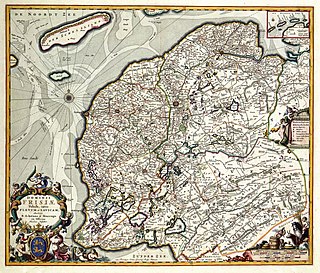
The Lordship of Frisia or Lordship of Friesland was a feudal dominion in the Netherlands. It was formed in 1524 when Emperor Charles V finally conquered Frisia.


